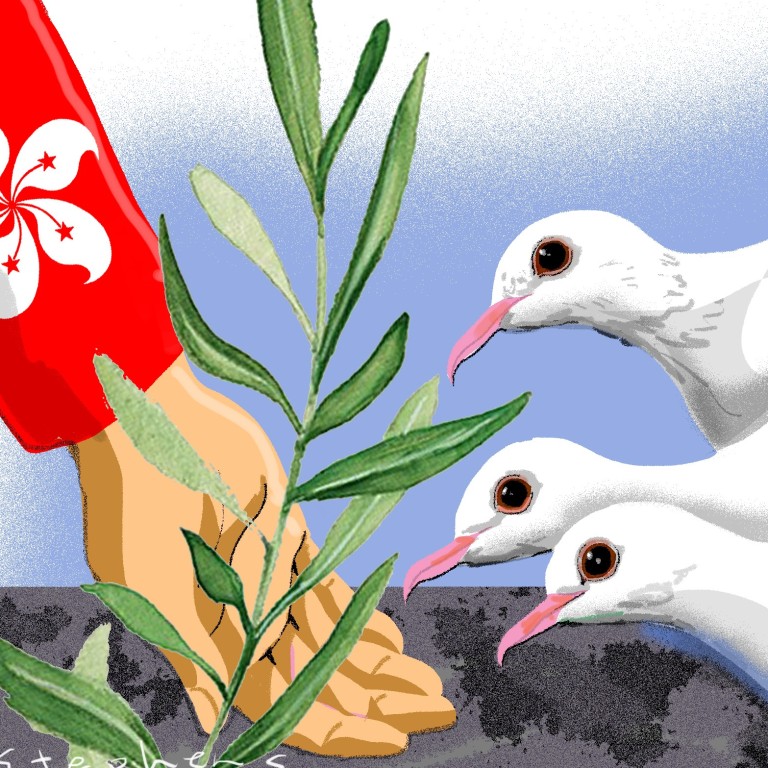
For all Hong Kong’s sake, Carrie Lam must reach out to the peaceful majority, to isolate the radicals and halt the violence
- Millions of Hongkongers have protested peacefully, but the small violent minority gets most of the attention. If the chief executive is willing to look past them and engage the silent majority, this story can still end happily
At the risk of being labelled outlandishly Micawberish, there is hope for Hong Kong yet. While the violence of past weeks has provided compelling fodder for headlines, it has distracted everyone from the underlying narrative – the great majority of disaffected Hongkongers have sought peaceful avenues of expression.
It is time to focus on what has gone right, rather than what is going wrong. This is far from flippantly contrarian. Compared to the sort of head-breaking force used to quell violent protests in places like the US, France, South Korea, Thailand or India, both police and marchers in the city have been remarkably controlled thus far.
A million-strong mob armed with Molotov cocktails would be quite a different scenario. Fortunately, we are not there yet. The government must expeditiously engage this silent majority to ween the main body of tired moderates from the lost radicals. It is time to cut through the flimflammery with a firm olive branch to this specific group.
This will achieve two things. Firstly, it will release steam that may then be vented across a table rather than on the street. Secondly, if marches are curtailed through dialogue, not duress, it will deny the violent fringe the sort of mass cover that has thus far provided refuge and pseudo-legitimacy by association.

The media must shoulder much of the blame for focusing excessively on the violence and vandalism of a few individuals and less on the stoic resolve of ordinary people of all ages and persuasions who have marched in sweltering heat and rain each weekend to make their point.
The danger in glib labels is that they oversimplify and obfuscate issues. They are eroding independent thinking and encouraging people to bay along with the “tribe” of their choice, thus accentuating fault lines, not healing them. It is irrelevant being pro-Beijing or anti-Beijing when it’s really time for all citizens to be unabashedly pro-Hong Kong.
A healthy Hong Kong – an invaluable conduit for international funds – is entirely in Beijing’s interest, and not just as a carrot to lure Taiwan.
It is imperative, therefore, that the government expand its dialogue to include a truly representative mix of people from the legal profession, the education sector, social workers, financiers, artists, journalists, civil servants, the private sector, property, the police, religious leaders and politicians of all hues.
These are all Hong Kong stakeholders. The government may not represent the people but a bipartisan dialogue open to all, can. These voices must be heard. As must Article 45 of the Basic Law, which says: “The ultimate aim is the selection of the chief executive by universal suffrage upon nomination by a broadly representative nominating committee.”
All this cannot await a calmer time, as Lam has suggested. These are uncharted stormy waters and a good helmsman should take the buffeting in his/her stride.
If unwilling or unable to make way for new blood at this time, Lam must reach out with strength as a leader, not timidly or fearful of consequences. Recourse to an emergency ordinance to strengthen her powers will be hugely counterproductive and cause potentially irrevocable cracks in society.
Hong Kong has been a city of risk takers. Let its leaders show they are made of sterner stuff. When the risks are high, the rewards are too.
Vijay Verghese is a Hong Kong-based journalist, columnist and editor of the online magazines AsianConversations.com and SmartTravelAsia.com

